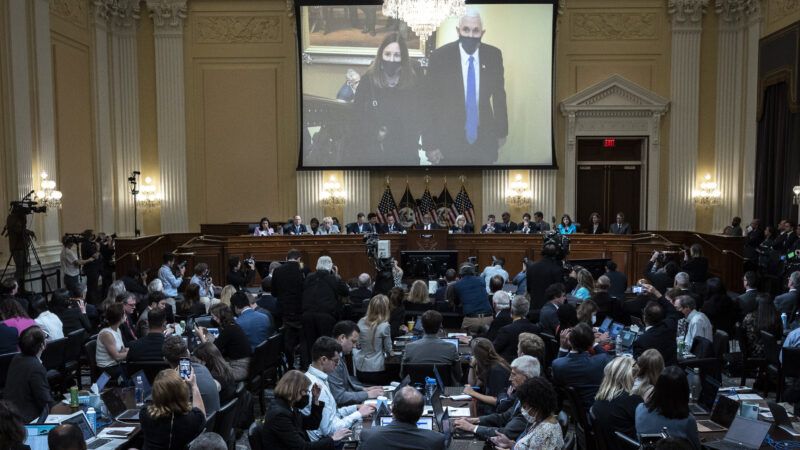YouTube Deleted a January 6th Committee Video for Spreading Election Misinformation
"We enforce our policies equally for everyone," said a spokesperson.

YouTube removed a video uploaded by the January 6th Committee that showed footage of former President Donald Trump contesting the results of the 2020 election.
Trump's false claim that voting machines erroneously "moved thousands of votes from my account to [Joe] Biden's account" was aired during the committee hearings, which are ongoing this week. Former Attorney General William Barr testified before the committee that he discovered no evidence to support Trump's assertions. Video footage of the hearings is available on YouTube.
The platform, however, has very strict rules against spreading election misinformation, which prohibit users from posting videos that observe that a false claim has been made, even if the user does not endorse the claim.
"Our election integrity policy prohibits content advancing false claims that widespread fraud, errors or glitches changed the outcome of the 2020 U.S. presidential election, if it does not provide sufficient context," Ivy Choi, a spokesperson for YouTube, told The New York Times. "We enforce our policies equally for everyone, and have removed the video uploaded by the Jan. 6 committee channel."
In essence, YouTube does not distinguish between Trump saying the election was stolen and a third party saying that Trump says the election was stolen. Suffice it to say this is not a very intelligent policy.
It is, however, the exact policy that ensnared Rising, the YouTube show I host for The Hill. In March, YouTube suspended The Hill's channel for violating the election misinformation policy. Our crime? We played a clip of Trump making false statements about the 2020 election. Neither I nor my co-host expressed any agreement with these statements; we simply reported what was said. It was an act of basic journalism, but YouTube said it was akin to promoting a prohibited viewpoint.
What happened to the January 6th Committee video is a powerful example of why this standard is so absurd. When policy makers, content moderators, and members of the media take a broad view of what counts as misinformation and disinformation, they are likely to incidentally forbid valid perspectives—including perspectives that are working to correct misinformation, as was the case here.
YouTube is a private company and can set whatever policies it deems best. But it seems fairly clear that the election misinformation policy is not working as intended; in fact, it is actively undermining good journalism.



Show Comments (121)